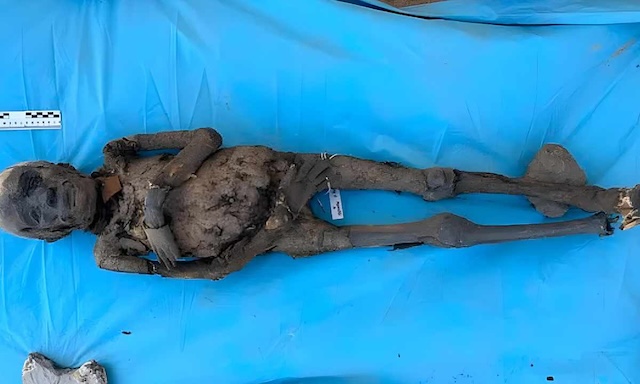In a groundbreaking discovery, archaeologists have unearthed a hidden “City of the Dead” in Aswan, Egypt, revealing over 300 ancient tombs dating back more than 3,000 years. This sprawling necropolis offers new insights into the lives, deaths, and burial practices of Egypt’s forgotten past, with many of the tombs containing the remains of infants and adolescents. As scientists continue to explore this vast site, the secrets of Aswan’s ancient inhabitants slowly come to light.
A Hidden ‘City of the Dead’ Discovered With More Than 300 Tombs!
Recently, a remarkable discovery was made in Aswan, Egypt, when archaeologists unearthed a massive ancient burial site consisting of over 300 tombs. Dubbed the ‘City of the Dead,’ this find offers a rare and profound glimpse into the lives of ancient civilizations that once inhabited the region, with many of the tombs dating back over 3,000 years. Among the remains discovered, a significant percentage belong to children and adolescents, shedding light on the challenges and health issues faced by the ancient inhabitants of Aswan.
Unearthing the ‘City of the Dead’
The excavation of the ‘City of the Dead’ began several years ago under the leadership of archaeologists from the University of Milan. This sprawling necropolis stretches across nearly 270,000 square feet and features multiple terraces of tombs, located near the modern Mausoleum of Aga Khan III in Aswan. What sets this discovery apart is the sheer scale of the burial site, as well as its location on a hillside, creating the impression of a true ‘City of the Dead.’
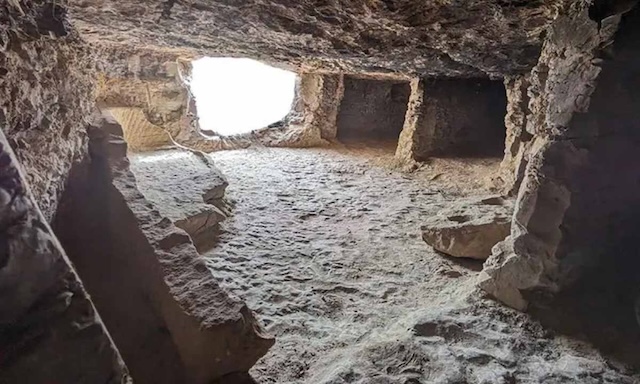
Archaeologist Patrizia Piacentini, who leads the team, described the find as one of the most unique in Egypt. “This was a really spectacular find,” she said, “a true City of the Dead.” The site’s significance is underscored by Aswan’s historical role as a major trade hub, military outpost, and quarry location along the Nile River.
The Tombs: A Glimpse into Ancient Lives
The tombs themselves tell fascinating stories about ancient Aswan’s social structure and burial practices. Over the centuries, these tombs were reused, with some containing as many as 30 to 40 mummies each. The positioning of the tombs reflected the social status of the deceased, with the wealthiest individuals buried on the higher terraces, while lower-ranking citizens were laid to rest on the lower levels. Among the remains, researchers discovered that many of the individuals suffered from diseases such as tuberculosis, anemia, and malnutrition, providing a detailed account of the health conditions and challenges faced by the people of Aswan.
One of the more surprising findings was the number of infants and young children buried at the site. An estimated 30-40% of the bodies found belonged to infants and adolescents, with many believed to have succumbed to infectious diseases and other life-threatening illnesses.
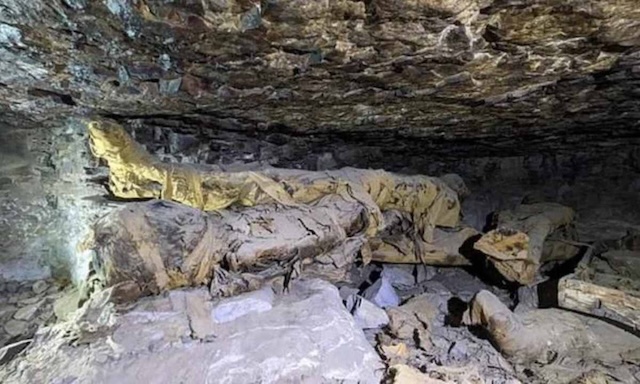
The Lives and Deaths of Aswan’s Inhabitants
Analysis of the mummified remains offers crucial insight into the health and medical practices of ancient Aswan’s residents. Evidence of various diseases, such as tuberculosis, chest and bowel disorders, and malnutrition, was found in many of the mummies. In one notable case, archaeologists discovered the skeleton of a woman who had undergone an amputation. The leg bones showed signs of healing, indicating that she survived the procedure—an extraordinary testament to the medical knowledge and surgical practices of the time.
Despite the harsh conditions that likely contributed to the early deaths of many inhabitants, the discovery of such surgical interventions also suggests that the people of Aswan had access to a level of healthcare and medical treatment that was more advanced than previously thought.
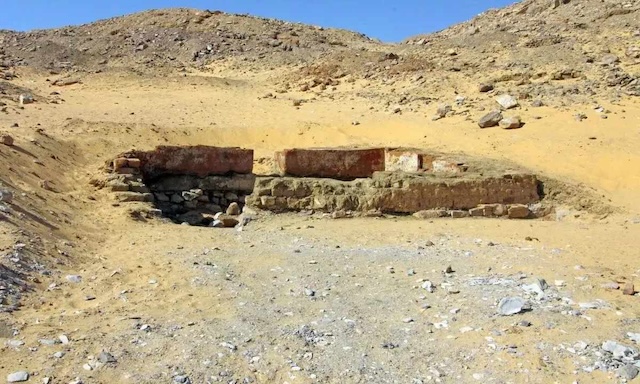
Aswan’s Rich Past
Aswan has been an important center for many civilizations over its 4,500-year history. Its strategic location on the Nile made it a bustling trade center, connecting the region with goods from the south and other parts of Africa. The quarries in Aswan provided granite for many of Egypt’s most famous monuments, and the city itself became a crucial military post for empires like the Romans and later the Turks and British.
The diversity of Aswan’s population reflects its role as a crossroads for people from different parts of the ancient world. Goods, cultures, and ideas converged in Aswan, contributing to its rich history and making it a melting pot of ancient civilizations. As Piacentini noted, “Aswan was a crossing point since forever. People were coming from the east to the west. Products from the south arrived in Aswan and then dispersed everywhere else.”
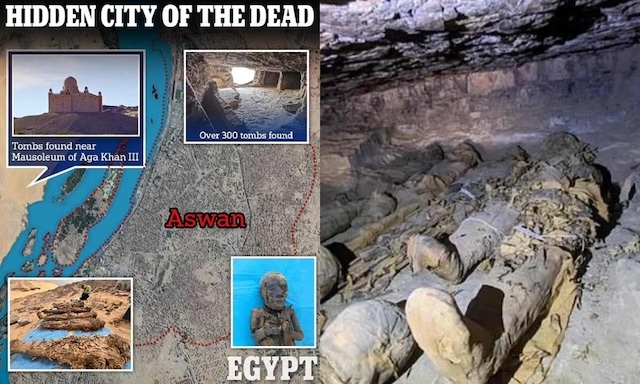
Artifacts and Offerings
Alongside the mummies, archaeologists uncovered a wide range of artifacts, including pottery, wooden objects, and sacrificial tables, providing further insight into the burial customs and daily lives of ancient Egyptians. Many of these objects were likely offerings made to accompany the deceased in the afterlife, reflecting the spiritual beliefs of the time. These artifacts offer a window into ancient Egyptian society, their rituals, and the objects they considered sacred or essential for the afterlife.
The careful placement of these artifacts in tombs, as well as the variety of burial methods used, suggests that burial customs in Aswan evolved over time, influenced by social status, religion, and the different cultures that inhabited the city throughout its long history.
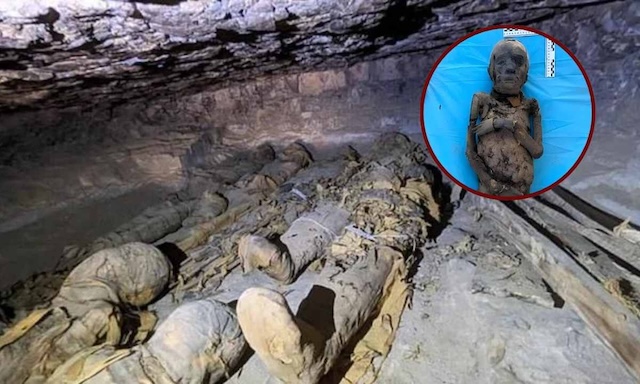
Conclusion
The discovery of the ‘City of the Dead’ in Aswan is a significant milestone in the field of archaeology, offering invaluable insights into the lives, deaths, and beliefs of ancient civilizations. From the health struggles of infants and adolescents to the advanced surgical procedures uncovered, this excavation provides a vivid glimpse into the past.
As archaeologists continue their work, there is hope that even more secrets of ancient Aswan will be uncovered, further enriching our understanding of the city’s importance and the people who once lived there. This discovery not only sheds light on ancient Egypt’s burial practices but also contributes to the broader understanding of human history and the complex societies that thrived along the Nile thousands of years ago.
